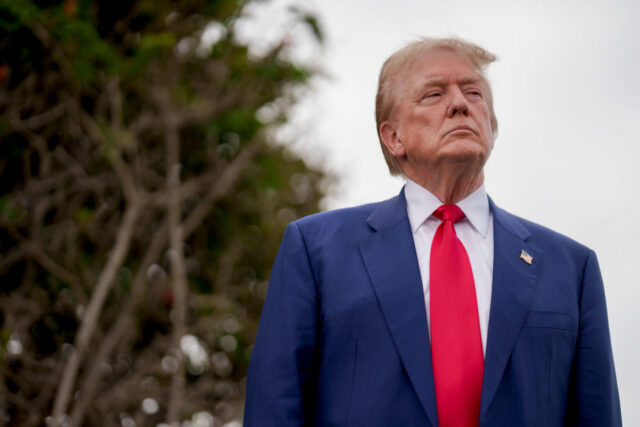Farmer Bob Hemesath, an Iowa resident, fears that US agriculture will pay dearly if former President Donald Trump wins Tuesday’s presidential election and fulfills his promise to impose a 60% tariff on Chinese and Chinese products. a 10% tax on all other imports.
It could be a much worse repeat of the Republican’s 2018 and 2019 trade war against China, which hit U.S. agricultural products with retaliatory tariffs and shifted purchases from Beijing to Brazil and Argentina, said Hemesath, who grows corn and soybeans. and raises pigs on 2,800 acres of land in northeast Iowa.
“When we start imposing tariffs on others, often the retaliatory tariffs end up on American agricultural products,” said Hemesath, who chairs the advocacy group Farmers for Free Trade.
READ MORE: Trump and fiscal risk take the dollar to R$5.87. It is the highest value in four and a half years
“What worries me is that when we do this kind of thing, we lose market share and we can’t get it back,” he said. Hemesath declined to say who he will vote for in the election.
Economists say Trump’s tariff plans, probably his most important economic policy, would drive U.S. import duties back to 1930s levels, spur inflation, collapse trade between the country and China, provoke retaliation and drastically reorder supply chains.
Hemesath’s concerns were echoed in a recent study by the National Corn Growers Association and the American Soybean Association, which predicted that a new trade war with China could trigger deeper losses in U.S. crop exports, sending domestic prices tumbling. already depressed and consolidate a shift in imports from China to Brazil and Argentina.
Trump, who is in a tight race for the White House against Democratic Vice President Kamala Harris, has called tariffs “the most beautiful word in the world” and argued that his plans would rebuild the U.S. manufacturing base, increase jobs and income and would generate trillions of dollars in federal revenue over 10 years.
Economists universally agree that tariffs are paid by the companies that import the products subject to the tariffs, and they pass the costs on to consumers or accept lower profits.
The tariffs, if fully imposed, would raise U.S. average effective tariff levels to 17.7%, the highest since 1934, according to the Tax Foundation. The plans have been compared to the Smoot-Hawley Tariff Act of 1930, which drastically increased U.S. tariffs, triggering retaliation and a global collapse in trade that helped worsen the Great Depression.
Overall trade between the US and China would fall by 70% from levels already reduced by Trump’s tariffs on China in 2018 and 2019, which were maintained and recently increased by President Joe Biden, said Bernard Yaros, chief economist at Oxford Economics for the USA.
READ MORE: How Brazil’s 2 million immigrants could be affected if Trump returns to the White House
Yaros said the post-tariff scenario would not reduce the overall U.S. trade deficit, but would trigger a “major reordering of trade flows” with other countries, which could be costly in the short term.
Kamala, who replaced Biden as the Democratic presidential candidate after he dropped his campaign in July, has criticized Trump’s tariff plans as “a national sales tax” that will cost American families up to $4,000 a year.
The Yale lab, which includes some former Biden administration economic and tax advisers, calculates that Trump’s tariffs would initially increase consumer price levels by 1.2% to 5.1%, or about seven to 31 percent. months of normal inflation at the Federal Reserve’s 2% annual target.
A Trump campaign spokesperson responded by citing a study by the Coalition for a Prosperous America, a tariff advocacy group, that shows a 10% universal tariff would not cause “significant price increases” and when combined with price cuts compensatory taxes, would generate economic growth of 728 billion dollars and 2.8 million jobs.
Kamala has endorsed the Biden administration’s more targeted approach to tariffs to protect strategic U.S. sectors, but said in September she would renegotiate Trump’s U.S.-Mexico-Canada Agreement on trade in 2026 to protect jobs in the sector. US automotive.






